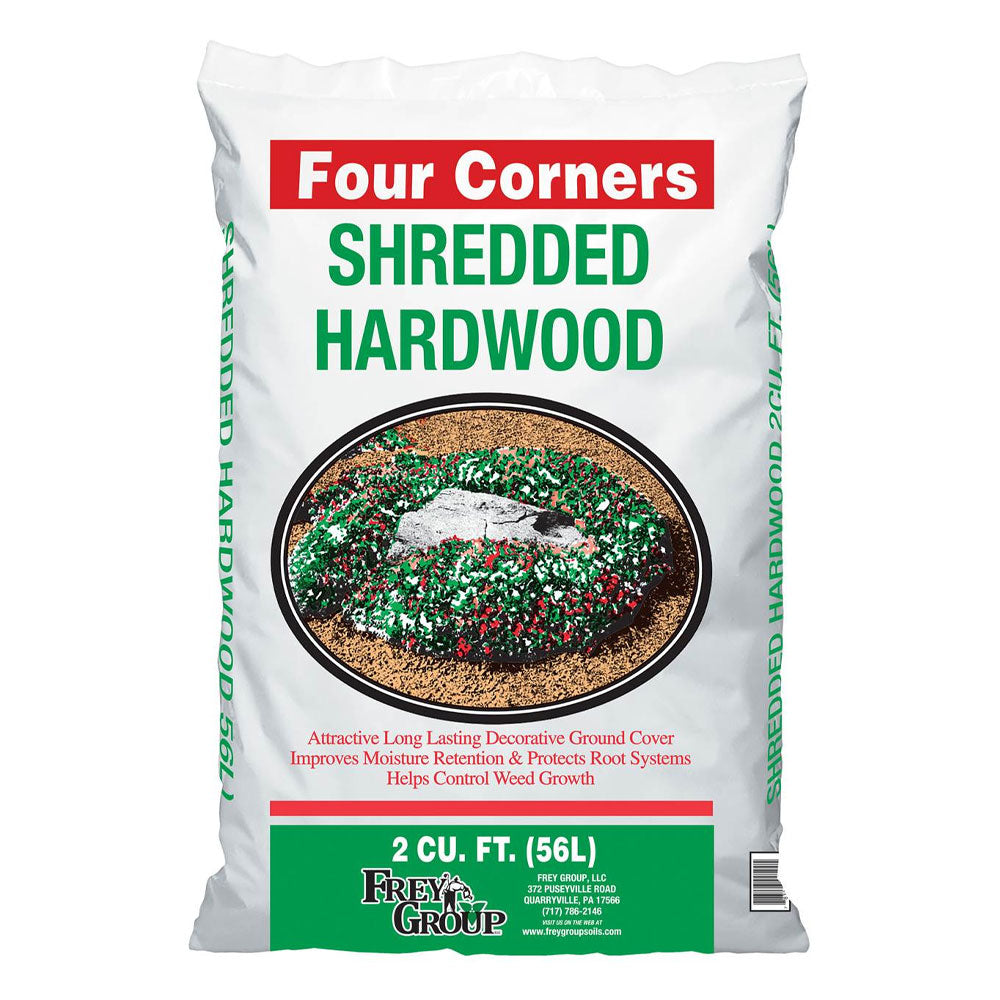Imagine transforming your garden into a lush, thriving ecosystem with less effort and more rewards. You might be wondering how you can achieve this while staying eco-friendly and cost-effective.
The secret lies in creating a natural mulching system that not only nourishes your plants but also protects them. This guide will show you how to harness the power of nature to keep your garden healthy and vibrant. You’ll discover simple steps and tips that you can implement today, giving you the confidence to take control of your garden’s future.
Stay with us, and learn how you can make your garden the envy of the neighborhood without breaking a sweat.

Benefits Of Natural Mulching
Natural mulching offers a wealth of benefits for your garden. Unlike synthetic options, it nurtures the soil while protecting plants. This eco-friendly method is simple yet effective. It enhances plant health and improves soil condition. Let’s explore the key advantages of natural mulching.
1. Improved Soil HealthNatural mulching enriches the soil with nutrients. As organic materials break down, they feed the soil. This process boosts soil fertility and structure. It encourages microorganisms to thrive. Healthier soil leads to healthier plants.
2. Moisture RetentionMulch acts as a protective barrier. It traps moisture in the soil. This reduces the need for frequent watering. Plants can absorb water more efficiently. Mulching helps conserve water resources.
3. Weed SuppressionMulch covers the soil surface. It blocks sunlight from reaching weeds. This prevents weed growth and competition. Less competition means better growth for your plants. Weed control becomes easier with natural mulching.
4. Temperature RegulationMulch stabilizes soil temperature. It keeps roots cool in summer. It insulates them in winter. Plants experience less stress from temperature swings. This promotes consistent growth throughout the year.
5. Enhanced Aesthetic AppealNatural mulch gives gardens a tidy look. It creates a uniform appearance. Different materials offer various textures and colors. This adds visual interest to your landscape. It’s a practical and attractive gardening solution.

Choosing The Right Materials
Creating a natural mulching system starts with the right materials. The right materials ensure healthy soil and plant growth. Mulching helps retain moisture and control weeds. It also enriches the soil. Choose materials that suit your garden’s needs. Consider your local climate and soil type. This will help you select the best materials for mulching.
Organic Materials
Organic materials are ideal for mulching. They decompose and enrich the soil. Leaves, grass clippings, and straw are common options. These materials are often available locally. They are cost-effective and eco-friendly. Ensure they are free from chemicals before use.
Inorganic Materials
Inorganic materials offer long-lasting solutions. Rocks, gravel, and plastic sheeting are examples. They do not decompose or enrich the soil. Use them in areas where organic matter is not ideal. They are perfect for high-traffic areas or pathways.
Composted Materials
Composted materials provide rich nutrients. They improve soil health significantly. Use kitchen scraps and yard waste for composting. Ensure the compost is fully decomposed before use. This prevents plant damage and promotes healthy growth.
Wood Chips And Bark
Wood chips and bark offer excellent weed control. They are decorative and functional. These materials decompose slowly. They are perfect for perennial beds and trees. Ensure they are free from disease before use.
Grass Clippings
Grass clippings are a readily available mulch. They decompose quickly, adding nutrients to the soil. Use them in vegetable gardens for best results. Dry them before applying to prevent clumping. Avoid clippings from chemically treated lawns.
Step-by-step Mulching Process
Creating a natural mulching system involves layering organic materials over soil. Start with grass clippings or shredded leaves. Add compost for nutrients, then cover with straw or wood chips to protect and enrich.
Creating a natural mulching system in your garden can transform the health of your plants and soil. It may seem daunting at first, but the step-by-step mulching process is straightforward and rewarding. With a few simple steps, you can enhance your garden’s ecosystem and improve your plant growth. Let’s dive into the process and see how you can implement a natural mulching system in your garden. ###1. Gather Your Materials
Start by collecting organic materials for your mulch. Leaves, grass clippings, and straw are great options. During autumn, fallen leaves are abundant and free, making them an excellent choice. Consider what’s available in your yard or neighborhood. Have you ever noticed how nature never wastes a thing? Embrace this mindset as you gather your materials. ###2. Prepare The Soil
Before laying down the mulch, ensure the soil is ready. Remove any weeds or debris that could interfere with the mulch. Loosen the soil slightly with a garden fork to improve aeration. This step can enhance the effectiveness of your mulch. Remember, healthy soil is the foundation of a thriving garden. ###3. Apply The Mulch
Spread your gathered materials evenly over the soil surface. Aim for a layer that’s about 2-4 inches thick. This thickness helps retain moisture, suppress weeds, and regulate soil temperature. Have you ever found yourself battling relentless weeds? Mulching can be your best ally in this fight. ###4. Monitor And Maintain
Keep an eye on your mulch layer as it breaks down over time. Add more materials as needed to maintain the desired thickness. Consider how nature consistently rejuvenates itself; your garden should do the same. Regularly check for any signs of pests or diseases. ###5. Evaluate The Impact
Observe how your plants respond to the natural mulch. Do they look healthier and more vibrant? Are weeds less of a problem? Reflect on these changes and adjust your mulching strategy as necessary. Remember, gardening is a dynamic process, and learning from your experiences is key to success. Creating a natural mulching system requires a bit of effort but offers significant rewards. By following these steps, you can foster a healthier garden environment. Take a moment to appreciate how your actions contribute to a more sustainable world. Your garden will thank you.Maintenance And Care Tips
Creating a natural mulching system enhances soil health and conserves moisture. Spread organic matter like leaves and grass clippings over the soil. This method reduces weed growth and enriches the earth as materials decompose.
Creating a natural mulching system is an excellent way to enrich your garden soil and promote healthy plant growth. However, maintaining and caring for it is crucial to ensure its effectiveness. This section provides you with practical tips to keep your mulching system in top shape. Dive into these insights and see how you can effortlessly manage your mulch, ensuring a thriving garden year-round.Inspect Regularly
Regular inspection is key. Make a habit of checking your mulch every couple of weeks. Look out for signs of decomposition or pest activity. A quick scan can save you from potential problems. If you notice any unusual changes, act promptly to address them.Adjust Thickness
Mulch thickness matters. Keep it around 2-3 inches deep. This prevents water loss while still allowing air circulation. If your mulch appears too thin or thick, adjust accordingly. This small tweak can make a significant difference in plant health.Replenish As Needed
Natural mulch breaks down over time. You will need to replenish it to maintain its benefits. Consider adding fresh layers every few months. This ensures your plants continue receiving the nutrients they need.Prevent Weeds
Mulch is a great weed barrier. However, weeds can still sneak through. Stay vigilant and remove them promptly. Hand-pulling is effective for small patches. For larger areas, consider using a hoe to keep weeds in check.Ensure Proper Drainage
Water should flow freely through your mulch. Poor drainage can lead to root rot. If you notice pooling water, it’s time to adjust your mulch. Aerating or redistributing it can enhance drainage.Monitor Weather Impact
Weather changes affect mulch. Heavy rain can compact it, while strong winds may scatter it. After extreme weather events, assess your mulch. Rearrange or replace it to maintain its protective layer.Use Mulch Wisely
Every type of mulch has its perks. Choose wisely based on your plant needs and local climate. Some mulches may attract pests, while others might not retain moisture well. Research and select what works best for your garden. — Maintaining your natural mulching system doesn’t have to be a chore. With these actionable tips, you can keep your garden thriving without the stress. What have you observed in your mulching journey? Share your insights in the comments below!
Conclusion
Creating a natural mulching system benefits your garden and the planet. It enriches the soil, reduces water usage, and controls weeds. Start with organic materials like leaves and grass clippings. Spread them evenly around plants. This simple method builds healthy, fertile ground.
It also saves money and time. Your garden thrives with less effort. Remember to refresh mulch regularly. Keep it thick for best results. Enjoy a vibrant garden with minimal maintenance. Embrace this eco-friendly approach. Your plants will thank you with lush growth and abundant blooms.
Happy gardening!



